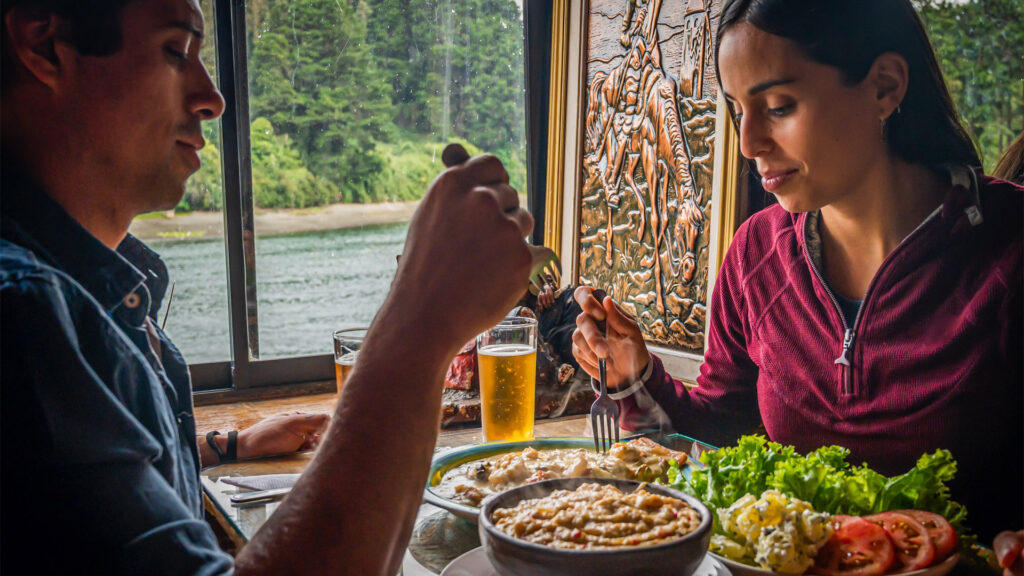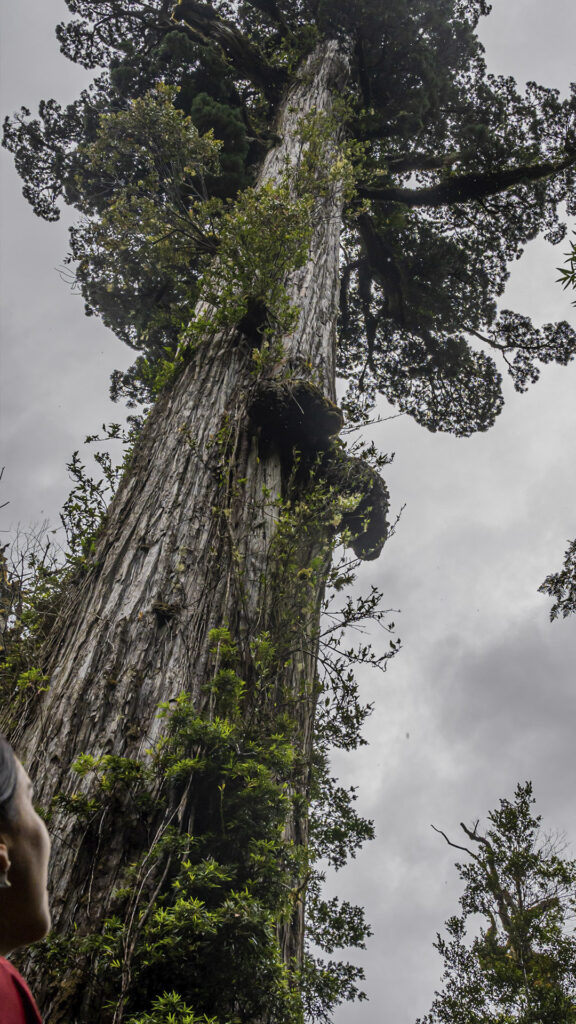
Get ready for an unforgettable journey to Chile in 2024. Explore the beginnings of Patagonia, with stunning landscapes, local culture, and adventures at every destination.
Day 1: Puerto Montt
Puerto Montt is the capital of the Los Lagos Region, a city that annually welcomes international cruises and serves as the starting point for the Carretera Austral and the Patagonia Verde destination. From its port, boats also depart to Isla Grande de Chiloé, Chaitén, and the regions of Aysén and Magallanes.
Puerto Montt existed long before it was founded by Vicente Pérez Rosales in 1853. Originally known as Astillero de Melipulli, it was inhabited by Chilotes who harvested and traded alerce wood. The Olavarría family had an established business where the German Club stands today.

Morning:
We can visit and have lunch at the city’s main attraction, the Angelmó cove. This market offers the best Chilean, Chilote, and southern Chilean cuisine. You’ll find an abundance of seafood and crafts, with many friendly vendors who adapt their products to suit customers’ tastes. The view from here includes Tenglo Island and the Calbuco volcano. It’s highly recommended to have breakfast or lunch in this beautiful spot, which is a must-visit destination in Puerto Montt.
Just over 1 kilometer from Angelmó, heading towards the city center, you’ll find Pueblito Melipulli, a collection of artisan shops where you’ll primarily discover works in wool, wood, and leather.
Continuing along the coastal area of the city, you’ll find Sentados Frente al Mar or the Statue of the Lovers, which depicts a couple embracing while gazing out at the Reloncaví Bay. This 6-meter-tall statue is the most famous icon of Puerto Montt, inspired by a ballad from the Uruguayan band Los Iracundos.
Heading deeper along the Carretera Austral, you can visit towns like Chamiza, Quillaipe, Lenca, or Caleta Arena, the last point accessible by land before crossing by sea to Hornopirén. Along the way, you’ll encounter beautiful landscapes and archaeological sites known as currais de pesca, ancient structures that acted as fish traps, allowing fish to be caught during high tide and preventing their escape when the tide receded.
If you need accommodation in Puerto Montt, you can search through our TOURIST SERVICES FINDER
To enjoy the afternoon, there’s a nature-filled spot perfect for photography enthusiasts: Lago Chapo. Surrounded by the Llanquihue Natural Reserve to the north and the Alerce Andino National Park to the south, these protected areas are part of the “Temperate Rainforests of the Southern Andes” Biosphere Reserve, covering approximately 73,000 hectares.
Another option is the Alerce Andino National Park, with three access points: Correntoso, Sargazo, and Chaicas. Here, you’ll find trails leading to 3,000-year-old alerce trees, waterfalls, and beautiful lagoons.

Day 2:
Morning:
Start your day with a beautiful journey to Tenglo Island. Boatmen at the Angelmó cove offer this service, and during the approximately 20-minute trip, you can enjoy views of the cove with its stilt houses and the coast of Puerto Montt.
On the island, you’ll encounter various native tree species, such as alerces, mañíos, ulmos, and ciruelillos. Tenglo Island is mainly inhabited by fishermen and is rich in local legends, including that of La Pincoya. The island also hosts traditional festivals and is home to a revered shrine of the Virgin of Lourdes.
You can take a hike up to the large cross that stands prominently on the island. Although the path is steep, reaching the top of this hill rewards you with a breathtaking view of the Osorno, Puntiagudo, and Calbuco volcanoes, as well as a panoramic view of the city of Puerto Montt.
Afternoon:
After returning to Angelmó cove, head towards Pelluco Beach, a serene spot with calm waves, suitable for swimming—though caution is advised. The cuisine around this beach is also excellent, making it a popular destination, especially in summer. When the tide is low, the beach expands significantly due to the gentle slope, offering even more space to relax and enjoy.
Day 3: Maullín
Maullín is a commune located 17 km southeast of Puerto Montt, about an hour’s drive away. This area is one of the oldest in southern Chile, dating back to the 17th century, and boasts significant architectural heritage, such as the Church of La Candelaria, inspired by Chilote architecture.
The Maullín River is the main tourist attraction, known for its rich biodiversity and wildlife. The river’s wetlands are an ecological conservation area, home to 53% of the bird species that migrate from north to south across Chile, making it a paradise for photography enthusiasts.
Maullín is also home to many beaches, with Pangal Beach being the most prominent, featuring white sands and a beautiful view of the Pacific Ocean. It’s a popular spot for sport fishing, horseback riding, hiking, and photography.
In the Quenuir Bajo area, you can observe flamingos and swans, making it a true haven for nature lovers.
If you’re looking for a tour, we recommend using our REGISTERED TOUR COMPANIES FINDER

Autor: @nico.falegria
Nicolás Faúndez Alegría
Estudiante de TNS en Turismo, cursando actualmente el último semestre de la carrera. Amante de la naturaleza, viajes, fotografía y la música, guitarrista hace años y formando grupos musicales de distintos estilos. Con conocimientos en áreas de medio ambiente (No Deje Rastro y reciclaje). Motivado a desarrollar un completo desempeño en Turismo y compartir mis conocimientos con otras personas y lograr la concientización del cuidado y protección de los espacios naturales de nuestro país. Con interés en el turismo vitivinícola, ecoturismo, hotelería y el rescate del patrimonio cultural.
